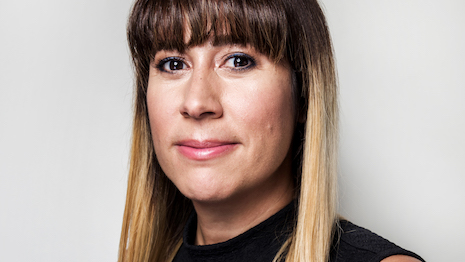By Tam Alesi
Luxury brands have historically looked to a single target for sales growth in the United States: adults ages 40-plus with annual household incomes of more than $250,000. The problem is, this segment is spending less on top-tier products.
This is not to say that they are making less money, but economic uncertainties have caused this 40-plus crowd to pull back on nice-to-have purchases. Plus, this crowd is a been-there, done-that group: they have lots of watches and jewelry.
Now, those who are still spending are more interested in the bragging rights that accrue from finding a great deal rather than throwing cash at the latest designer car.
Cachet cow
To ensure continued brand health, luxury brands need to take these demographic and psychographic trends to heart and start speaking to a new, younger audience I call the young affluents.
Members of this segment are ages 25-plus with household incomes of more than $100,000. With more disposable income than older generations, especially at the same age, these millennials currently present the biggest opportunity for luxury brands in the US.
Young affluents have cash and are ready to spend it on their first big, splashy purchases.
For them, the right watch, car, clothes, jewelry and other top-tier goods and services still produce cachet. The brands they select say something about them, and they are enjoying their newfound spending power.
To reach this group, luxury brands should consider a four-pronged approach:
1. Tell inspirational stories
Selling a dream – the idea that people will see a brand as a realization of a hope or ambition – is dead.
Younger consumers want to be inspired to buy, and pay a premium for, luxury items. To do that, luxury brands need to start having conversations with them, not just at them.
Chanel has done this by telling the story of founder, Gabrielle “Coco” Chanel. Stories that celebrate her passionate nature, her audacity and her avant-garde style have helped sell a handbag and a fragrance.
2. Optimize your channel mix
Smart brands go where their audiences live, not where they themselves are historically comfortable. This means engaging consumers across several different connection points.
One of the first items on any luxury brand’s agenda must be a shift away from print, where magazine reach has fallen to less than 40 percent among this audience.
The good news, however, is that these consumers are online and use digital to discover and find inspiration in new ideas and brands.
To take advantage, brands should consider allocating more dollars to digital- and mobile-led media, supported by above-the-line channels such as television, out of home and print, in that order.
Sephora has done this by leveraging mobile to create Tinder-like features that help shoppers find the right beauty products and make-up tools among the thousands available for purchase.
3. Create high-quality, personalized content at scale
As consumer preferences become more sophisticated and personalized, brands must do a better job of creating experiences that resonate.
A traditional TV commercial or print campaign can no longer be repeated in digital: creative can and must be personalized. This is where data is key.
Programmatic technologies allow us to serve the right messages, to the right people, at the times when they are most likely to engage.
Warby Parker has revolutionized the U.S. eyeglass business by creating a strong online brand that insulates the company from copycat competitors. Central to its approach is a messaging strategy centered on storytelling, creating partnerships with other fun brands and focusing on creating unique experiences.
4. Lean into consumer-generated content
While most luxury companies are still pushing messages out in a one-way fashion, some are beginning to engage directly with consumers.
Why? Because young affluents are accustomed to making and sharing their own content, and they are certainly used to having two-way conversations with brands. Brands that communicate openly and honestly are favored.
Estée Lauder, for example, has been using reverse mentoring to ensure its senior management is as facile with today’s communications tools and preferences as the younger members of its marketing team. This is helping the brand create new lines such as Estée Edit that is designed to stand out in social media environments.
ALL OF THIS takes a certain amount of bravery.
But brands willing to truly engage, inspire and step out of their comfort zone are and will be rewarded.
Tam Alesi is managing partner for integrated strategic planning and executive client lead for retail at MediaCom USA, New York. Reach her at tam.alesi@mediacom.com.
{"ct":"xktAR6RMxHEj4tfccMAL0ld1ll\/GpD6+Fz4aSuOBuorndDleLuZq7ljRUwr\/+WQsNckJGjZiYOuYLGJW07VHExD6kLJipuWc0ZFW8Tg9zKEiVIvAZPIqwiPBhFHCafbw4GnGj2Qn95+sgWlxuP13\/JVfmhYOedSrtOKfm2OSjk8ljQucuojbNm\/Gk7HenUMuWFHuJilUzsZt0mxKnPLKaZPYd7wEuNxHpDJW\/TN8XjCdQ8eU4zePo5TVGfT4zXl2M3c3Vhtzzg4c2drnB4fCE+Ys3X+V4ZPdnHghcyz8oz\/v5KIO0\/7+tW8m64\/Gy92POyOvGnnF9KGVUMUz1O04ShqagzX6kn3cpQmZMuCvyFwNFD91uAxmQWZLPwiQogpQXiHqlgJw94C+XTHSAUDkGB2YljWLnPGu4yPrcuDMvMB9\/I3ox4eGBA0yY3oV0LkB\/hruM3WPHbwlLdH7OVmtwSeV56zfQbpsh0QM6GzHL7HxKj9\/HRolESc8EYMvfWB1FAU\/ghE5QS1eM6w8cukYXP3EdYPtUZCqXajo0\/mo+ajHf3OSddk8ULQ73JUdqrlh6n70JjsfY7ETBchjI4g0uxqXx68NY\/KVBQBD\/\/W3F7WP8bmoJ9XI1l3uvVvFe2HtkRKU4ZgSv1vzVvcWoPzawHYj7XZnNEz5Wc1YsQlkQYHGkUZpKUXV6pKvcHOkUny99OLOYVEjkDS0HXROe1TzwpM7ERMnk2vdq9ah6WcQFbsXn6nvxzZr8CoKDIH7JGjh8CmC5Q\/0SiafyacSY42J2SzHwGyh3jxPg+97HA+qxEsGCyFhOUoqIeYXIcKe7qSOkhxDfqcfUEocFdKHh8020bHXXty7U\/og3CEjw2izyQbw+EdgJIHFRWF6mf3gnHMr1et8OpDIkZGdpirdCsMvXuSysy57uQkX8KwKZp+7B\/XnYn5kXk85Pnz0UGQHoa57urDNDeXD7eMdM8BAonqp74hXt7tA\/N+lCxnT+ag9u9DcVoBql9fBC1UuKR4AoPsLUbwHLrXh\/\/9XCsfJFhtTUnniUry+JBhKrB3DpSCYsGi2AikfYoS3RojfhoIXaNX1XJk5zdkZ+ygk+2LQZ9PmEbVeDImOiU9hJLiH8YeBxQiwnunUO+0GQzyCN6Qevz2q0Gw9swGOmfGlxwVNfWje2jDsCQLsxHFNzO+SUFYSoL6Ys3bPWhWEBmKN+v+MhEmgNMl+Z7gQmBNhUkSCOsWoOayAJzj38iYiIN9oj2rS+l5+48eWG83pzzgPQyh9xZ8Derk42vjFqdCT8MO2SVq4Oeq3xA5icgNIoPYKwe9bFS6r67dir14qckiz5cq1lTTNCFvQYQUzuvWT+24BN4zX1jh+kX4cSxEkdYls+EIK82rKZDW\/A\/lYwaBGlvSMyD628IdKTsSsl9SCeBBqoKkghs3gsWqrOFSMErDQC30l7qaYZSlm33ZZA8A2OXgZ1KZaT8oBBcRUinzIv5dwbEHfXYySFDwVWexPLkq3b3y+9dsjsFvhqGTN41HtB0+t33m5s9VZX7j\/P72chB9hXEgRMZyOylPoyRWqNEtD426KoXZjNc7hKliDZEx0\/eIXB3PCX8iYJJd\/BgBJ+K8qb0SJiT0wpsuj0aSonErn57tg46RlkCRgaIxthIwjLKJmH45qnNeHrx6dLVKne4s\/pmdhOQzjxCq24HibL2X8I4yH87VC2X1IGWJH4DppWbgNBJZsckNGjp4QBs5qT0wE0Uvhb8bIZHWicIV2A3FFRwiV0C\/uroI70nzV9YP4qHgLBmZTlONqhhHBXb0UQOsy5W3kuChgJKFTJAvmmS8M7Ac76eoGvPNze4X\/akAPJFVp8PQuQ4O7pFLU\/N6ljYkm+soQQ0vbneXrUIBbL9Wg40MpEMDFeI3CYu\/RDfaSGCSy6hxZftLlORzpJgDjZcQ\/9NhEOLfD68ZM4x5UW7mOOA6+iVVz\/B04ZZGxniQxCN\/q1S3ipAvsVPWuHl0c0HB+V8yyk3abC3oT4\/pShNgZgOf8TbQw1DKSlHahu2isOmf8PCW+T5WHD+VQoghMmZXzgbIRUXqiybVllKOSA0zAMOBQFsqwdWw7lDl7QEr\/oywfgGLWI3gnnvpMYqNUd0jafbd\/gcj5nXYubxvZb3dEQi318\/A8B7jUOUlpmpLlOHyazIhA5nOsAxRoCSk+5qQ9F8OAgXnf+89I+cuGfVFwiaNpyhuLW22\/Sm0WFzNKrTTdTA4gYL\/WIjjGU3wDVwnzq\/VqHMi1KHbbfMKaio2phIBVMyxbsw3Coj9VvToe\/E6CNdn41JcRQYj69YyrTp2Ro5ILzBFO7u2u9i7alyRMJC+z1dVwlhCM0uCXV77QaJNcmddpz+jOjYsiLGXmo7ox\/ixy1w+ADR7hPF\/KwQR59T44hhA8niStt822wDBOnixt5DerZdIXFYDvwiGXCpDA5TXaL3cHidSggYhb+Fihym5NJMLo2qtmWwB2zn++zdbVsgOJWbd8e9uCnJrjnbRRaReeQ23uGzCdzDI3VPWPZAuFaTze+B9seUxHWMRFNv0V9Aw1xXYFIoRIcPu3KFuOSzyipZpnPPjCXCdQKTDAWxbGYgJxSJR2yWsmiKnXihq2yicbEl8LbMaRNScvOGcvSmZB+3oAJsOJC6dR1ieXINPKDMU+DRfXlwCiPUbAyZwizKWEJ9Uu65N+Y2O2YpagAtAUbGbFZlcsgby52XP5NAXVoJeu1z2SEEc+Qs4XvXJlF+b5Oo5q\/tab6mHpmad7rWfjBtEpiUHDBdezWSxwuG5KEjqOPkAvPF3wnUjE0Wahad\/EtAhy\/5MJ4fKyfv2pXirYZGH8hMgMPP2hsH6uNc0vptXa4cK97APDPhuX1C2d9rRzrD\/UXBoEwZRmg\/g+1E4gIJR1OPbRovaMmMHzxvz8rDx1uNb\/e+Qy433CqnYWrZLmHhrDh2QdwC1s93Ee55XQtfD\/KYE94CBM4WQjw97vv1kLL5mKA0E9\/m3wBbjQpke41M2DaE8HtqfpYmWgMbPdjNu+EHM+W02em9vUums3DYBiFUgPtp0i+XlmWHkcO6uT5KtrKA1eONoUMRp5bl1BzRIUO0ZNTQY+Dy+F2PGiZTr31AEjQNtwY7pii1Av7166u0nbnkJ\/3A8Gx979tzLsGtJ8dykx1caAwb6yDOlHuIMAffzulK830qsf9YJztkKyiD0RY85REMi\/tHSKaU8Kn13ZLfY\/Iayqx8oFA4SGOuYVcRMYTAdzeSkHvI9oaOd5dMaUiIs8d62PdnKd7ARYNGywBJVB1sFHhkx\/2CtABvP5qsA\/nnpW5iJgWVwLica4Zy9R66WpNQNrU\/cCWox9EnMF66leswohEa8Uktb9L+C3oNOQuJabhzJJe7QatB31jhagf3wzGZiVhlYctheBEI\/NZPrh2Pira2vSKCCaPpnNyMV1xanHDsIJP1hjOX2h4cXFC\/bgj5BdS8ouKMZbQojdL\/jMs3bIaoNE+omXrI4E7F7keGtRNOaXfcdwoHmu0dF0TlPmQSWss6vfb4j3Mfhzw9zfvx+fnvpnPPpqX4x8ysYqeEoIIptIQN1SDfPFGKW2Em1hdR3BkH\/7pug6NQPXkCP93kDPlh5V1moFmw4xsSShIDVR8woKyGqxe37kmBi1Jgh1Py18CzJUh8klr3ZhUODlemdO3bGvgPGAkbfp9+CGFLOJUWipAYCDdGS2we\/8IULRNeVXpKdrivLQVcwxEnE5pGs7pBjh4I8Z2RRr\/qQ8ccXr27DZv\/BFUvuTy5e4swrdMhd43YN8+RowQluBRgOO5ZZHldz2ujIzY+v3aPmCgtPfBS3y2weA5TuK8qt3PhVKGXTT3LjsxzgHW+QLWXyyAMHVbbfe+mN48+uM3NqFdXwP8XIjKetVyYY+g0tsDHYe1YR3RUxyDrRqyXdj7XcvqBsVXe19NIamdg\/GoJSf\/q7bBOBmm1zMG8FeKxQeX0sVuNKxJl+IRXKN6TF8Vmm2vynOZIUSn7C+47k0P3vpIXnJgddtav15WkORtGddwbB2Yl+KdPx+4FXhBt5LSAfE5CcNJ0L\/VYojK6BpEVBWPlVnjepES8c\/PHDX1NrKQmBvKa2pYetxdTjrNO7k2n+SCadCfAjBF+4uzuBkc4W9lgkll+SBehykl7NAIN+3XAt6ytUMPblwV91j3xh8adil+Zm1J\/HsDVc0bxxg\/I0WJyNVQtW2lunZn46mJZ\/NTvDdFVhoZyDZeKsMXJnhHEKDtj1hmVmPIQ1+KkkdjcjHSUKoBX7Nc8awS3B2W2b4kOzsebxkzd1NP+ti6\/pxiHjP9d7tLKudAgiAMytEL+bVBL7ZtztsjJq4ax0hMdFDYRj55Hk6RruNweuwER70YhdGTeU+rX\/lDKv9dgQz\/1X\/dw8pwmBcZmHO\/U\/LZpWMy97EtxrSFJCENoSZ1RkqpNIiy7ItzY8wUcdYGSoHXz\/4ibBUFUERfvhSAmde+JLpm3pU\/1m5IhYEVbxXmpYAeVlBHsIPgFd1WhnDIydrO9bnZClP+LoxT0313n7r5RkbDKvFf0yat4c5g1DaHZSEPqrPwlHEE9NBAjdaukqp1WJNfjXAaO2Fnz51+rxKS09OnzSlZfaoopuUcWLfLK\/1GYQniGVrl2tMmVL+f472Ssui8lzQq3\/TlraXxWNLNUnu7KaCTwtqPE05PVha8dNje7MInThp9zc+yCSg6+R7y\/c0T\/G0Zji0neMqHW62XX2vU5LbHobcQ3T93VYOdFQi1RJR\/nQ3VQr0KkiV8+EgVqAEIuyWcno6Ckn+zT\/Or+jX82TrDsKf3IVPNOoLjgl3Y0Fy6Rh6ES6V8bKYJgoeUMvqdkl04KXpxoiS\/Wrruat\/vj71xfnNYbB2l9no6srO2bpAgVLZf485ZjQCO6206zGIH21lin+3f6zFLT8HilfkxMaL2QI1XOJaw2SGOMPfaC2+z34igeGJP+Kokj+nFkTP6V8sLusuE1K\/ZNWpMl+cmoEF5Xernb57Z8Og0WBG8gmEu9eVUorP8tZegwgXIXwRo5lvXB1hH\/A0URG3jdLD17KKeJGZT44JzibfeQraqS36fik+Q8Aa15sC3nijDUH9wtN9hDBJ\/ndtt6B5qo0+wIcYTT2zJaepuuI9eukJALOngTXmmIBkeymmeNJbbX2nbG9mwU7CcayxTcU28D5sqWFjT81M0+p0IIjCd8\/gkImFrn3GlAA0Dvkm87DLShaJYapvT1+qJtG1+nSy29Rr4P\/uBVqUQ9fkLHPF8tAcOBEIpE3uOp\/oGDc3klZ7AFydFcKxCQz9ot4kcswY4Lblu+6xoHLUNFnWARAKBG6SAnr9zM1cqy6bsxo6aqfwZWNblGumq9jRKBqstB6lBiI4o0hw3J51wHgSRDQZfSlNYS3nBtKVR587ffkqFYOZRguLDXYDamna2aY9hsY0C5Nzsty3p9wWNE3HEyBGMBVbdfmQYEJ+xZJHY+iZs2isGQmKiHxI6WGgNzH0um7jHzc\/sZxAyCqPnzrZTrZAeff8Iku\/0r8XYeTw6myUDaHkXVkIMN61AZ9QFVIqvxvsSfMXvRmnpuKex1ZILGR0e+AiFLue13NwgKhjFMN\/BQxU7pkYj5T9pTz2ZWcNOl7WxGDG2XrQ8zVzoE4n3rxnZN4xG7g3uCv9UBpAsvpAYP8+svP1g+HtUBc2HiaVctJAsXLyTsj3Kh0oQF30AG+huCxYuNyZVcRXg8LKcafA6AzieTouBTwBwios\/Dkkp+EYCts\/5m4RNViwgo8d2M6de8VkRwAqrkuJ0jHnvZfw7vCh5NtVt5Xr3zED3aNKdwmsGc84PfHy6NMXkkeXaRFKIxYOSymSI1TMa2bWPwxEJ6gBZqUU7H0sJvdgw\/zjogruI0jSPY3fEpFH\/zvW\/3KahVUeWlIinCi09xYQDFMV1UW2GqO7iepqjFAOoD4F8FeL5ktDlYbZSfwNe187mYv52++ESYGJB3bZnP5CjznQMzywzo9kyaZPA3RLE4peeX5EZQ+DKztRZQkWdmKSc4XQVCCTQqw6FmEDgo6djRM8hLJJ8L\/sSIOJitBvnBmsTz45lodIc\/\/uXlQTRnv9hNmMYmaatxydB83cvz6gh7pMDwbz81g4VMxP7XhKcusjw490X2bpM81pR6ojZtkzmfN2\/VrRy+AhZb8c+OOLNJpVZG8ymWqnkbVmYOQsQPdX52i7sevzaeJiflB9vseH4bgji3ADn4fUUZfVZs9G0+0qp4NWsuka8DkawaaJg8AB\/OOK2FWzjRG3fbXO\/CNY0+pIu7nMl+Q6rYGadO9gYYYkNn6x4oBPhCPtv57Lhc\/lPTy1lu\/lATsXmByn+HHL85XsedE6eYhzZOopTLKL8U7fj0Nd4NCs1fagGdTHzBur21iVRH92SuSDG5gY2VSPmarc35Do17tuanAkZFjtfy5\/iQPdZfvv+gwzL9CklF8CtQypdLmbqSKpzrdOKHtyxMxSWzGe5qMtVoV1pABt\/qW1+zJ2vdp52gbg606LecCD1dv4++dgMlW43SgM9189JUwRxSw1++kOpTUZrr3Z6nUXOuf3QvKenxrcbXEZ4W47pbT00CfUcn6ebE0vojkIWGP7OgLFD4YEMB5NHEq6FOWPvVKHJhKvifOdAGY\/rXrbLJTuBw4S8qoBOhup\/snkQTrCrDIc4WpRnItjAt0GoWSX\/zX14bunU++Fqn3+YOIV8kVuvxuNGvJOeg9cNhkVN5Efd3V62XpMWw\/5j59EqTHA91MV65TET9D8sTZBgGiY2aWC654\/IX16Nxr8BGVFP0KdcuMI0MkClEjZH31bYCNfKCbJHF0esIb54hQfhOOhm\/Y0J4538MuDwibvFYSyGOan4J+i7nOJau2OOrXjHKeOy4RmiAzbFjttGdLRgLsuRfb0uMx5d8Zfzen+1qpFIjN3qKGEPHj2+tW34qRAv\/6PN7ESPjK0kCymHZF64NtatBQ8piNXDkwoETUplOJApxtZl52ddBzPNdwrJl0UUk5tz4V2\/NWVmyITqYfd1164LeELsQ89S1JvvANniiDIeBXb9dZ5coeLVw8eOJXkgDiQS8S3wvEI0TSq5al+QYLd3bvGxp0tjZfejQ2sqejKrAe64ubioggAtPqV8DyzlYXbTExG2mZrcDEae9pr+L+6spMoJSkDL+aHMOTiHfkGNuQhHp+ge6SFDIMcuX5XBgr0+j93VnX+PP8rtf94RauT46YA","iv":"f5b2c9c5dcb0ffd290b0a1773ff6ddc7","s":"d6e80c47e9ed0d43"}

 Tam Alesi is managing partner for integrated strategic planning and executive client lead for retail at MediaCom USA
Tam Alesi is managing partner for integrated strategic planning and executive client lead for retail at MediaCom USA
This writer has obviously never worked for a luxury brand. At least in the last five years. As someone who has worked in-house at luxury fashion brands for 10+ years, I can assure you the ultimate target audience over the past 3-4 years has been millennial. In fact, it’s all that luxury brands can talk about. Does Tamara ever speak to anyone ever at luxury brands? I’m not saying brands are always doing it right, but they are constantly looking for sales growth within the younger audience – so sadly, it’s clear this article is written by an industry outsider.
It would be so interesting and also lucrative for the luxury brands to look at the over 40
looking at their life style ,size occupation
The over 40 are always looking for that little something to freshen up stheir wardrobe and looks